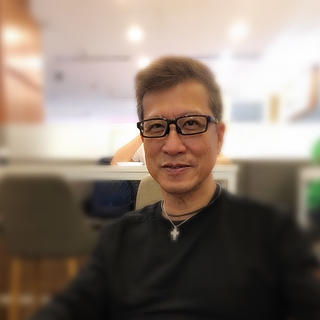Part 2: When Empathy Is the Lifeline – What Frontline Care Taught Me About Healing Presence
- Ivan Lim
- Aug 1
- 3 min read

Part 2: When Empathy Is the Lifeline – What Frontline Care Taught Me About Healing Presence By Dr. Ivan Zy Lim, Clinical Psychologist, Transcultural Psychotherapy Specialist, PATH Trauma Consultant & Founder, Inner Quest Centre
In the first part of this series, we explored how Confucian, Daoist, and Buddhist philosophies reframe empathy, not as a purely internal emotion, but as a relational ethic, a spiritual presence, and a path to liberation. That exploration laid a philosophical foundation.
Now, I want to bring that foundation to life. Because these ideas are not abstract for me. I’ve seen them at work, in some of the most high-pressure, emotionally charged contexts imaginable.
For the past few years, I’ve had the privilege of coaching global Safety Ambassadors, dedicated professionals who serve as first responders for guests and hosts impacted by traumatic events: domestic violence, suicide disclosures, sudden death, and abuse. These Ambassadors aren't therapists, but in a single call or message, they often offer the first experience of safety someone might have after trauma.
This is empathy in motion. And it's taught me more than any theory.
The Real-Life Weight of Empathy
Empathy in these conversations isn’t about “feeling with” someone. It’s about creating emotional oxygen. It’s about restoring dignity when it’s been stripped away by crisis. And it’s about anchoring someone who is overwhelmed, confused, or in pain.
I remember coaching an Ambassador named Mei who supported a host whose guest had died by suicide. Mei didn’t rush to explain, fix, or reassure. She paused. She acknowledged. And then she said:
“You’re not alone in this. We’re here to walk through the next steps with you—at your pace.”
This is empathy that holds, not overwhelms. It respects emotional boundaries while still offering connection.
Bridging Philosophy and Frontline Care
Here’s where Eastern philosophy meets real-world practice:
Confucianism taught us that empathy lives in relational duty. I see this when Ambassadors say, “Let’s take this one step at a time,” and honor the other person’s pace.
Daoism taught us about flow and presence. I see this when Ambassadors stop filling the silence, and instead offer calm, grounded presence in the midst of panic.
Buddhism taught us to meet suffering with compassionate action. I see this when Ambassadors gently invite agency: “Would it be okay if I check in with you again tomorrow?”
These are not scripts. These are stances, ways of being that restore safety, choice, and connection.
Lessons from the Field
After reviewing hundreds of transcripts and training dozens of Ambassadors, I’ve learned:
Empathy regulates. In trauma, the nervous system is flooded. An Ambassador’s calm tone, attuned pacing, and gentle affirmations help co-regulate the user’s distress.
Empathy restores. Many trauma survivors feel ashamed, dismissed, or confused. When we meet them without judgment and without rush, we help return dignity to their experience.
Empathy transforms. The difference between a guest feeling alone and a guest feeling accompanied often comes down to one phrase. Not “I understand”, but “I’m with you.”
These moments don't erase trauma. But they change its emotional imprint.
Practices for Embodied Empathy in Crisis Work
Here are some field-tested practices I now share with care teams and therapists alike:
The 3-Second Anchor
Before responding, breathe and anchor yourself. Ask: What does this moment need—stillness or speech?
Voice as Co-Regulation
Train in tone matching—lower your volume, slow your cadence, and reflect the user’s emotion without amplifying it.
Micro-phrases of Safety
Compile a toolkit of short phrases that offer comfort and agency:
“We can take this step by step.”
“You don’t have to go into detail if that feels too much.”
“Would it help if I stayed on the line a bit longer?”
Role-based Reflection
After each interaction, reflect:
What role was I invited to hold in this moment? Listener? Guide? Witness?
Did I honor that role without overstepping?
Silence as Support
Don’t fill every pause. Sometimes, the most powerful empathy is the willingness to stay. In Daoist terms, this is wu wei, non-interference that holds space.
Empathy as Stabilizer, Not Savior
Trauma invites us to respond—not from ego, but from essence. Not to rescue, but to respect.
What these Safety Ambassadors practice daily is not sentimental empathy. It is structured, spacious, and attuned presence. It is Confucian duty, Daoist calm, and Buddhist compassion—in action.
And here’s what I’ve come to believe: Empathy isn’t soft.
It’s sacred.
And when practiced well, it becomes the lifeline someone didn’t even know they were reaching for.
About the Author Dr. Ivan Zy Lim is a Clinical Psychologist, trauma consultant, and founder of Inner Quest Centre. He trains global care teams, therapists, and Safety Ambassadors in trauma-informed, culturally grounded empathy practices rooted in Confucian, Daoist, Buddhist, and Christian thought.





Comments